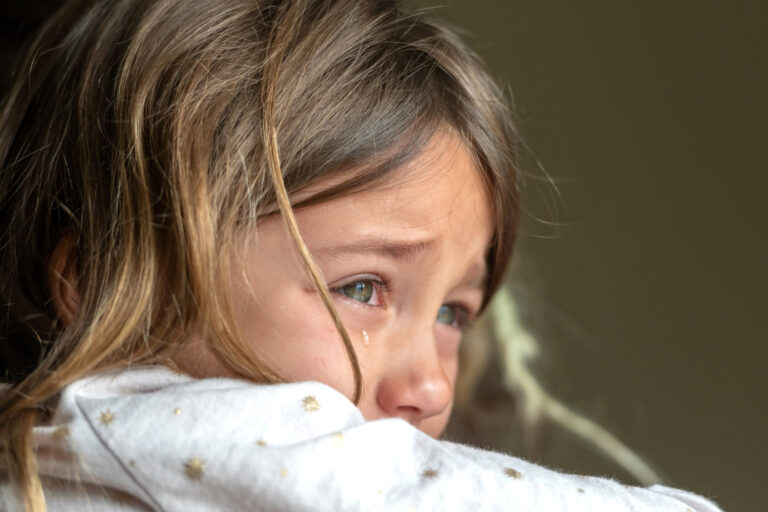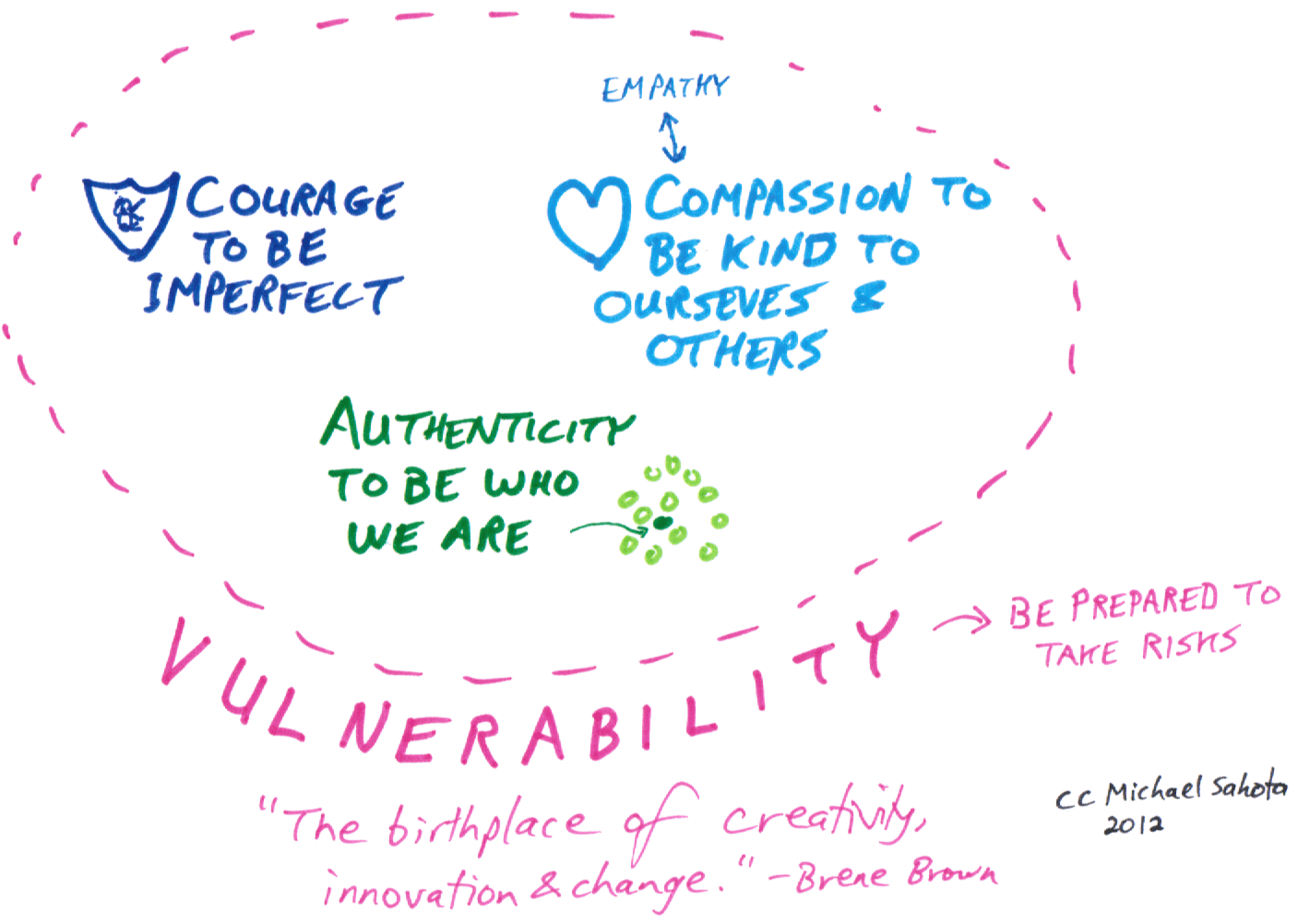Trauma is a pervasive and often overlooked issue that affects many students in our schools. It can have a profound impact on their overall well-being and ability to learn. As educators, it is crucial that we understand the effects of trauma and how it can manifest in the classroom. This is where trauma-informed teaching comes in.
Trauma-informed teaching is an approach that recognizes the prevalence and impact of trauma on students’ lives. It aims to create a safe and supportive learning environment that promotes healing and resilience. By understanding and implementing trauma-informed teaching strategies, educators can better meet the needs of their students and support their academic and emotional growth.
In this blog post, we will delve into the definition of trauma-informed teaching and why it is important. We will explore the various ways trauma can affect students’ learning and discuss strategies for recognizing signs of trauma in students. Additionally, we will provide practical techniques for implementing trauma-informed teaching, such as creating a safe and supportive environment, promoting resilience and healing, and incorporating social-emotional learning.
Furthermore, we will address the importance of addressing our own personal biases as educators and building trust with our students. By understanding and overcoming personal biases, we can create a more inclusive and accepting classroom environment. Building trust and establishing relationships with our students is also crucial for their healing and growth.
Finally, we will discuss the importance of working with other professionals and utilizing available resources. Collaborating with school counsellors and psychologists can provide valuable support and guidance in implementing trauma-informed teaching practices. Additionally, we will explore the role of community resources and the need for continual professional development in this area.
By the end of this blog post, you will have a comprehensive understanding of trauma-informed teaching and practical strategies for implementing it in your own classroom. Together, let’s create an environment that supports the healing and success of all our students.
Introduction to Trauma-Informed Teaching
Trauma-informed teaching is an approach that aims to create a safe and supportive learning environment for students who have experienced trauma. By understanding the impact of trauma on students’ lives and implementing specific strategies, educators can better meet their needs and support their academic and emotional growth.
To fully grasp the concept of trauma-informed teaching, let’s explore its definition, the importance it holds, and the ways in which trauma can affect students’ learning.
Definition of Trauma-Informed Teaching
Trauma-informed teaching refers to an educational approach that recognizes the prevalence of trauma and its potential impact on students. It involves understanding the physiological, emotional, and behavioural responses that trauma can elicit and responding in a way that promotes healing, resilience, and academic success.
A trauma-informed classroom is one that prioritizes safety, trust, and empowerment. It focuses on creating an environment where students feel understood, supported, and valued, taking into account their unique experiences and needs.
Why Trauma-Informed Teaching is Important
Trauma can have a profound impact on students’ ability to learn and engage in the classroom. It can affect their cognitive functioning, attention, emotional regulation, and social interactions. By adopting a trauma-informed approach, educators can provide the necessary support and accommodations to help students overcome these challenges and thrive academically.
Trauma-informed teaching is not only essential for individual student success but also for building a positive and inclusive classroom culture. It fosters empathy, understanding, and resilience among all students, creating an environment that promotes overall well-being and academic achievement.
Impact of Trauma on Students’ Learning
Trauma can manifest in various ways, and its effects on students’ learning can be significant. Some common impacts of trauma on learning include:
- Difficulty concentrating and staying focused: Students who have experienced trauma may struggle with concentration, leading to challenges in absorbing and retaining information.
- Emotional dysregulation: Trauma can cause emotional upheaval, making it difficult for students to regulate their emotions effectively. This can result in outbursts, withdrawal, or difficulty engaging in learning activities.
- Disruption of executive functioning skills: Trauma can impair executive functions such as problem-solving, decision-making, and self-control. This can impact students’ ability to plan, organize, and complete tasks.
- Negative self-perception and low self-esteem: Students who have experienced trauma may develop negative beliefs about themselves, leading to low self-esteem and a lack of confidence in their academic abilities.
- Social difficulties: Trauma can impact students’ social interactions, making it challenging for them to form and maintain healthy relationships with peers and adults in the school environment.
Understanding the impact of trauma on students’ learning is crucial for implementing effective trauma-informed teaching strategies. By recognizing the signs and adapting our approach, we can create a supportive and nurturing environment that promotes healing and academic success for all students.
Recognising Signs of Trauma in Students
Recognizing signs of trauma in students is a fundamental aspect of implementing trauma-informed teaching. By being aware of the signs and symptoms that may indicate a student has experienced trauma, educators can provide appropriate support and accommodations to help them navigate their educational journey. In this section, we will explore the physical, behavioural, and emotional signs of trauma that educators should be attentive to.
Physical Signs of Trauma
- Sleep disturbances: Students who have experienced trauma may exhibit difficulties falling asleep, staying asleep, or experiencing nightmares.
- Fatigue and low energy: Trauma can lead to chronic stress and emotional exhaustion, resulting in students feeling constantly fatigued and lacking energy.
- Physical complaints: Students may frequently complain of headaches, stomachaches, or other physical ailments that have no apparent medical cause.
- Changes in appetite: Trauma can disrupt students’ eating patterns, leading to a decrease or increase in appetite and potential weight fluctuations.
- Heightened arousal: Some students may exhibit hypervigilance or an exaggerated startle response, constantly being on high alert due to their traumatic experiences.
Behavioural Signs of Trauma
- Withdrawal and isolation: Students who have experienced trauma may withdraw from social interactions, isolate themselves, and avoid participating in classroom activities.
- Aggression and anger outbursts: Trauma can manifest as anger and aggression, leading to frequent outbursts or confrontations with peers or authority figures.
- Avoidance of triggers: Students may actively avoid situations, places, or topics that remind them of their traumatic experiences.
- Disruptive behaviours: Traumatized students may exhibit challenging behaviours such as defiance, non-compliance, or disruptive actions as a coping mechanism.
- Regression: Some students may exhibit behaviours that are developmentally younger than their actual age, such as bedwetting, thumb-sucking, or tantrums.
Emotional Signs of Trauma
- Intense fear or anxiety: Students may display excessive fear, anxiety, or worry, often without a clear trigger or reason.
- Emotional numbing: Trauma can cause students to emotionally shut down or detach from their feelings as a protective mechanism.
- Emotional dysregulation: Students may struggle with regulating their emotions, experiencing sudden mood swings, irritability, or emotional outbursts.
- Depression and sadness: Trauma can lead to feelings of sadness, hopelessness, or a persistent low mood in students.
- Difficulty trusting others: Students who have experienced trauma may have difficulty trusting others, including teachers and peers, due to their past experiences of betrayal or abuse.
As educators, it is essential to remain vigilant and observant of these signs in our students. By recognizing and understanding the signs of trauma, we can respond empathetically and implement trauma-informed strategies to support their well-being and academic progress.
Strategies for Implementing Trauma-Informed Teaching
Implementing trauma-informed teaching strategies is crucial for creating a safe and supportive learning environment for students who have experienced trauma. In this section, we will explore practical strategies that educators can employ to effectively implement trauma-informed teaching in their classrooms.
Creating a Safe and Supportive Environment
- Establish clear expectations and boundaries: Clearly communicate classroom rules and expectations to provide a sense of safety and structure for students. Consistently enforce these boundaries to create a predictable and secure environment.
- Foster a positive and inclusive classroom culture: Encourage respect, empathy, and kindness among students. Create opportunities for collaboration, cooperation, and peer support to foster a sense of belonging and acceptance.
- Provide a physically safe space: Arrange the classroom in a way that promotes physical safety, such as ensuring clear pathways, minimizing clutter, and providing comfortable seating options.
- Implement calming strategies: Incorporate calming activities, such as breathing exercises, mindfulness techniques, or sensory breaks, to help students regulate their emotions and reduce anxiety.
Promoting Resilience and Healing
- Cultivate a strengths-based approach: Recognize and celebrate students’ strengths, talents, and achievements to boost their self-esteem and resilience.
- Encourage self-expression: Provide opportunities for students to express their thoughts, feelings, and experiences through creative outlets like art, writing, or music. This can aid in processing trauma and promoting emotional healing.
- Teach coping skills: Explicitly teach students coping strategies, such as problem-solving techniques, emotion regulation strategies, and stress management techniques. Equip them with the tools to navigate challenges and setbacks.
- Foster a sense of empowerment: Involve students in decision-making processes, allowing them to have a voice in their own education. This empowers them and helps rebuild a sense of control and agency.
Incorporating Social-Emotional Learning
- Integrate social-emotional learning (SEL) into the curriculum: Embed SEL competencies, such as self-awareness, self-management, social awareness, relationship skills, and responsible decision-making, into daily lessons and activities.
- Teach emotional literacy: Help students develop emotional intelligence by teaching them to identify, label, and understand their emotions. Provide opportunities for discussions about emotions and empathy.
- Build positive relationships: Develop strong, positive relationships with students based on trust, respect, and empathy. Foster a sense of connectedness and support through one-on-one conversations, mentorship programs, or advisory groups.
- Implement restorative practices: Utilize restorative circles, conflict resolution strategies, and peer mediation to promote healthy communication, empathy, and reconciliation within the classroom community.
By implementing these strategies, educators can create an inclusive and supportive learning environment that addresses the needs of students who have experienced trauma. Remember, each student’s journey is unique, so flexibility and individualized approaches are key to effectively implementing trauma-informed teaching strategies.
Addressing Personal Biases and Building Trust
Addressing personal biases and building trust are essential components of trauma-informed teaching. As educators, it is crucial to be aware of our own biases and beliefs, as they can impact our interactions with students who have experienced trauma. In this section, we will explore strategies for understanding and overcoming personal biases, as well as building trust and establishing relationships with students.
Understanding and Overcoming Personal Biases
- Reflect on personal biases: Take time for self-reflection to identify any biases or assumptions you may hold about students who have experienced trauma. Be honest with yourself and open to challenging and changing those biases.
- Seek education and awareness: Engage in professional development opportunities that focus on cultural competence, trauma-informed practices, and understanding the experiences of diverse student populations. This can help broaden your perspective and challenge stereotypes.
- Practice empathy and perspective-taking: Put yourself in the shoes of students who have experienced trauma, seeking to understand their experiences and the impact it may have on their behaviour and learning. Develop empathy by actively listening to their stories and validating their feelings.
- Engage in ongoing self-reflection: Continuously examine your thoughts, reactions, and interactions with students. Regularly question your assumptions and biases to ensure you are providing equitable and inclusive support.
Building Trust and Establishing Relationships
- Create a safe and non-judgmental space: Foster an environment where students feel safe to share their thoughts, emotions, and experiences without fear of judgment or punishment. Respect their boundaries and confidentiality.
- Practice active listening: Give students your full attention, listen attentively, and respond empathetically. Show genuine interest in their perspectives and validate their feelings.
- Be consistent and reliable: Maintain consistency in your actions, expectations, and responses to build trust. Follow through with commitments and be reliable in your support for students.
- Cultivate a strengths-based approach: Focus on students’ strengths and positive attributes. Recognize their resilience and celebrate their achievements, fostering a sense of self-worth and trust in their abilities.
- Involve students in decision-making: Give students a voice in their own education by involving them in decision-making processes. Seek their input on classroom rules, assignments, or activities, demonstrating respect for their autonomy.
- Practice trauma-sensitive communication: Use trauma-sensitive language and avoid triggering or retraumatizing students. Be mindful of your tone, body language, and choice of words when addressing sensitive topics.
Remember that building trust takes time and consistency. It requires ongoing effort and a commitment to understanding and supporting each student’s unique needs. By addressing personal biases and building trust, educators can create an environment where students feel valued, respected, and supported on their healing journey.
Working with Other Professionals and Resources
Working with other professionals and utilizing available resources is a crucial aspect of implementing trauma-informed teaching. Collaborating with school counsellors, and psychologists, and utilizing community resources can provide valuable support and enhance the effectiveness of trauma-informed practices. In this section, we will explore strategies for working with other professionals and accessing resources to further support students who have experienced trauma.
Collaborating with School Counsellors and Psychologists
- Establish open lines of communication: Develop a collaborative relationship with school counsellors and psychologists by maintaining open and frequent communication. Share relevant information about students’ needs, progress, and challenges.
- Seek their expertise: Consult with school counsellors and psychologists to gain a deeper understanding of trauma and its impact on students’ well-being and learning. They can provide guidance on trauma-informed interventions and support strategies.
- Collaborate on individualized plans: Work together to develop individualized plans for students who have experienced trauma. This may involve creating personalized accommodations, implementing specific interventions, or providing targeted support.
- Attend professional development opportunities: Attend professional development sessions or workshops led by school counsellors or psychologists to enhance your knowledge and skills in trauma-informed practices.
Utilizing Community Resources
- Identify community resources: Research and identify community resources such as mental health clinics, trauma support centres, or organizations that provide services for students who have experienced trauma.
- Establish partnerships: Collaborate with community organizations to access additional support services for students. This could include trauma-focused therapy, counselling, or mentoring programs.
- Advocate for resources: Advocate for the allocation of resources within your school or district to support trauma-informed initiatives. This may include securing funding for professional development, additional staff, or specialized programs.
- Involve families and caregivers: Engage families and caregivers in accessing community resources by providing them with information, referrals, and support. Collaborate with them to ensure continuity of care and support for students outside of the school setting.
Continual Professional Development in Trauma-Informed Teaching
- Stay updated on research and best practices: Engage in ongoing professional development to stay informed about the latest research, best practices, and advancements in trauma-informed teaching. Attend conferences, webinars, or workshops focused on trauma-informed practices.
- Join professional networks: Join professional networks or online communities that focus on trauma-informed teaching. Engage in discussions, share resources, and learn from other educators who are implementing trauma-informed strategies.
- Reflect and refine your practices: Regularly reflect on your own teaching practices and seek feedback from colleagues, students, and families. Continually refine and adapt your strategies based on new insights and experiences.
- Pursue additional certifications or training: Consider pursuing additional certifications or training in trauma-informed teaching or related fields to deepen your expertise and enhance your ability to support students who have experienced trauma.
By collaborating with other professionals and utilising available resources, educators can access a wider range of support services and enhance their capacity to meet the needs of students who have experienced trauma. This collaborative approach strengthens the implementation of trauma-informed teaching and promotes positive outcomes for students.








